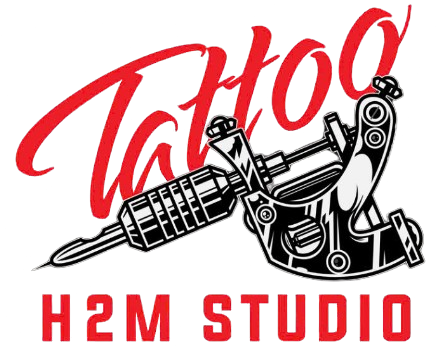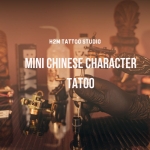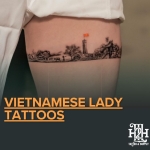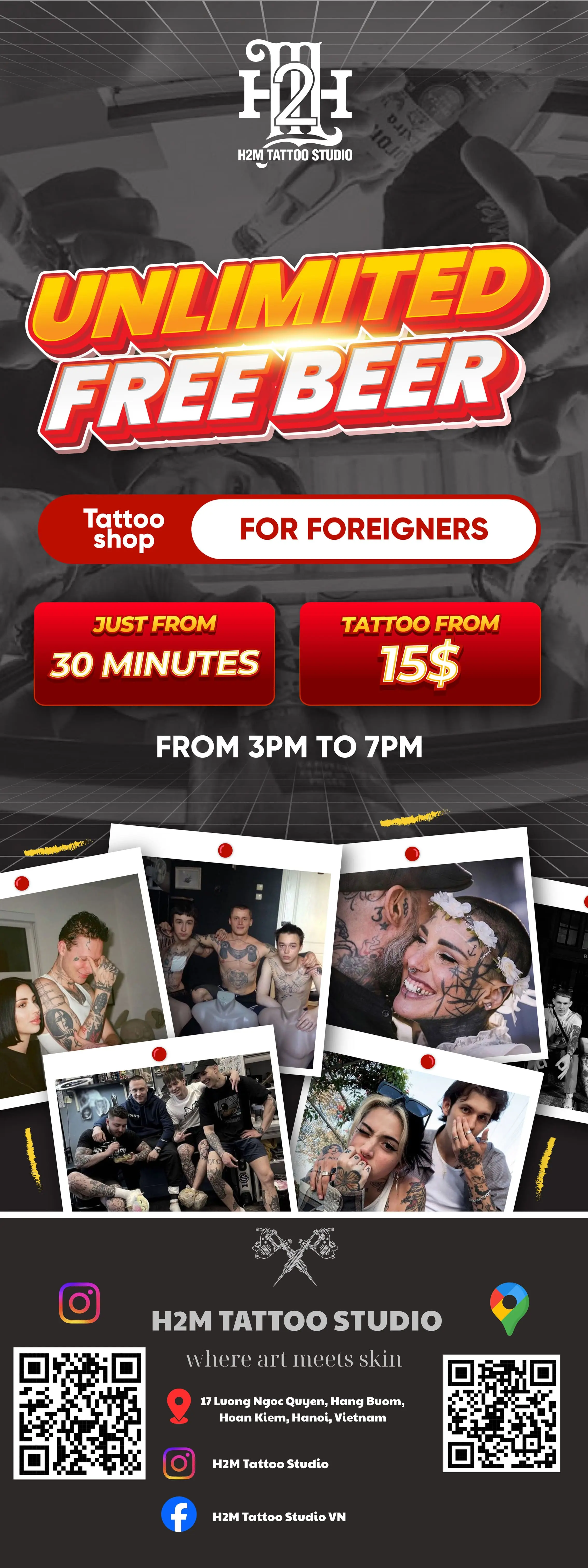Can you get tattoos over stretch marks? This question has become one of the most frequently asked inquiries at H2M Tattoo Studio, as more people discover they can transform their stretch marks into beautiful, meaningful body art. The answer is absolutely yes. With up to 90% of pregnant women and millions of others worldwide developing stretch marks, the demand for expert tattoo solutions has grown significantly. At H2M Tattoo Studio, our experienced artists specialize in various techniques—from complete cover-ups to seamless blending and artistic integration—helping clients turn natural skin changes into stunning artwork.
Understanding Stretch Marks and Tattooing Over Them
What Are Stretch Marks?
Stretch marks, medically known as striae, are a form of scarring that occurs when the skin stretches rapidly due to sudden growth or weight changes. These linear markings appear when the middle layer of skin (dermis) tears due to rapid stretching, allowing the deeper skin layers to show through. Common causes include pregnancy, puberty growth spurts, rapid weight gain or loss, muscle building, and certain medical conditions affecting skin elasticity.
From a biological perspective, stretch marks represent areas where the skin's collagen and elastin fibers have been damaged or broken. Initially appearing as red, purple, or pink streaks (striae rubrae), they gradually fade to white, silver, or flesh-colored lines (striae albae) as they mature. This color change indicates the healing process and significantly impacts tattoo application possibilities.
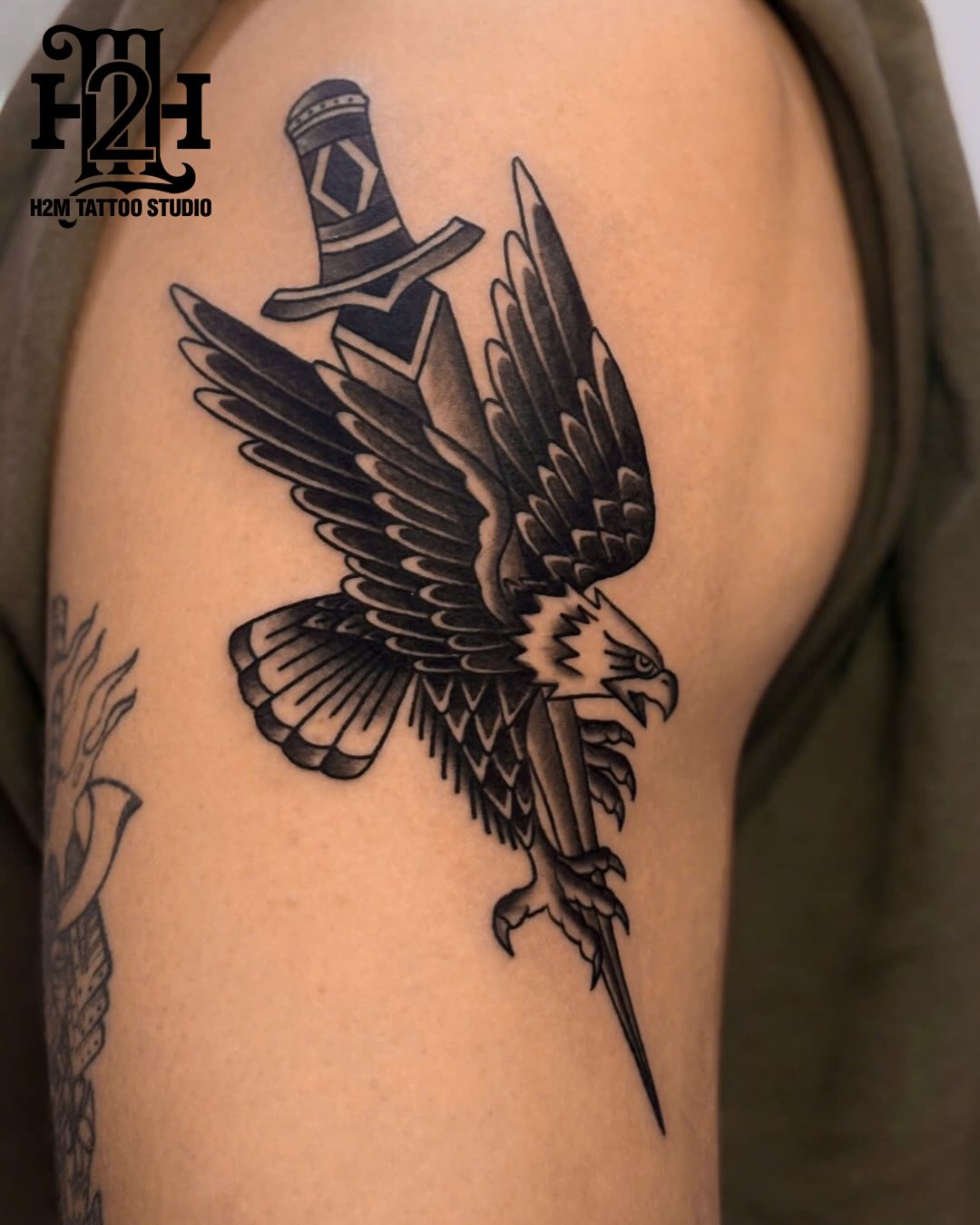
How Tattooing Over Stretch Marks Works
The fundamental principle of tattooing involves depositing ink into the dermis layer of skin using needles. When it comes to stretch marks, tattoo artists must work with altered skin texture and density. The scarred tissue in stretch marks has different properties than normal skin:
- Reduced collagen density affects how ink settles and appears
- Altered skin thickness can cause uneven ink distribution
- Changed skin elasticity impacts healing and final appearance
- Different blood flow patterns affect the tattooing process and recovery
Despite these challenges, skilled tattoo artists can successfully work over stretch marks using specialized techniques. The key lies in understanding that tattooing over stretch marks often requires multiple sessions, patience during the healing process, and realistic expectations about the final outcome.
Common Misconceptions About Stretch Mark Tattoos
Many people believe that stretch marks cannot be tattooed at all, which is entirely false. Another common misconception is that tattoos will completely eliminate the appearance of stretch marks—while tattoos can significantly reduce their visibility, the underlying skin texture changes may still be detectable upon close inspection.
Some individuals also worry that tattooing over stretch marks is more dangerous than regular tattooing. While there are additional considerations and potential complications, when performed by an experienced professional using proper techniques and aftercare, tattooing over stretch marks carries similar risks to conventional tattooing.
>>>> READ MORE: best tattoo location on body Choices: The Ultimate Guide for Perfect Placement
Tattooing Over Stretch Marks: Types and Techniques
Traditional Cover-Up Tattoos
Traditional cover-up tattoos represent the most common approach to tattooing over stretch marks. This technique involves designing artwork that completely conceals the stretch marks beneath bold, strategic imagery. Cover-up tattoos typically require:
Design Considerations:
- Darker ink colors to effectively mask the stretch marks
- Strategic placement of design elements over the most prominent marks
- Sufficient size to accommodate the area needing coverage
- Artistic elements that work with, rather than against, the skin's natural contours
Popular Cover-Up Designs:
- Floral patterns with leaves and vines that naturally follow stretch mark lines
- Geometric patterns that can incorporate linear elements
- Landscape scenes that use natural lines and shadows
- Abstract designs that embrace organic, flowing shapes
The success of traditional cover-ups depends heavily on the artist's experience with scar tissue and their ability to adapt ink application techniques for altered skin. Multiple sessions are often necessary to achieve optimal color saturation and coverage.

Cosmetic Tattooing and Pigment Blending
Cosmetic tattooing, also known as medical tattooing or paramedical tattooing, focuses on blending stretch marks with the surrounding skin tone rather than covering them with decorative artwork. This technique uses specialized pigments that match the client's natural skin color.
Key Features of Cosmetic Tattooing:
- Custom color matching to individual skin tones
- Subtle application that appears natural
- Focus on texture blending rather than complete coverage
- Often combined with other cosmetic procedures
The Pigment Blending Process:
- Consultation and Color Assessment: Artists analyze skin undertones and create custom pigment blends
- Test Patch Application: Small areas are tested to ensure color compatibility and skin reaction
- Gradual Application: Multiple light layers build up color gradually
- Color Settling Period: Several weeks between sessions allow for proper color assessment
- Touch-Up Sessions: Fine-tuning ensures optimal blending results
This approach works particularly well for people who prefer subtle enhancement over bold artistic statements and is especially effective on mature, lighter stretch marks.
Artistic Integration Techniques
Rather than hiding stretch marks, some innovative tattoo artists specialize in incorporating them into artistic designs. This approach celebrates the skin's natural patterns while creating meaningful body art.
Integration Design Strategies:
- Lightning bolt designs that follow stretch mark patterns
- Tree branches or roots that incorporate natural skin lines
- Abstract flowing patterns that embrace organic shapes
- Minimalist line work that enhances rather than conceals
Benefits of Artistic Integration:
- Requires less ink and fewer sessions than full cover-ups
- Often less painful than heavy coverage techniques
- Celebrates body positivity and self-acceptance
- Creates unique, personalized artwork
This technique requires artists with exceptional creativity and technical skill, as they must work with existing skin patterns rather than covering them completely.
Specialized Equipment and Techniques
Tattooing over stretch marks often requires modified equipment and techniques compared to standard tattooing:
Equipment Modifications:
- Different needle configurations for varying skin densities
- Adjusted machine settings for optimal ink penetration
- Specialized aftercare products for sensitive scar tissue
Technical Adaptations:
- Slower tattooing pace to accommodate skin sensitivity
- Multiple light passes instead of heavy single applications
- Strategic timing between sessions to allow proper healing
- Custom ink formulations for better adhesion to scar tissue
>>>> SEE MORE: vietnam tattoo prices 2025 : Complete Guide with 7 Cost-Saving Tips
Factors Influencing Tattoo Outcomes on Stretch Marks
Stretch Mark Maturity and Age
The age and maturity of stretch marks significantly impact tattooing success. Understanding the different stages helps set realistic expectations and optimal timing for tattoo application.
Fresh Stretch Marks (Red/Purple Phase):
- Age: 0-6 months typically
- Characteristics: Raised, inflamed, actively healing
- Tattoo Considerations: Generally not recommended for tattooing due to ongoing skin changes and increased sensitivity
- Best Approach: Wait for maturation before considering tattooing
Transitional Stretch Marks (Pink/Light Red Phase):
- Age: 6 months to 2 years
- Characteristics: Flattening, color fading, stabilizing
- Tattoo Considerations: Possible but requires careful assessment by experienced artists
- Special Requirements: Extended healing periods and multiple sessions often necessary
Mature Stretch Marks (White/Silver Phase):
- Age: 2+ years
- Characteristics: Fully healed, stable texture, minimal inflammation
- Tattoo Considerations: Optimal timing for tattoo application
- Advantages: Predictable healing, stable skin structure, better ink retention
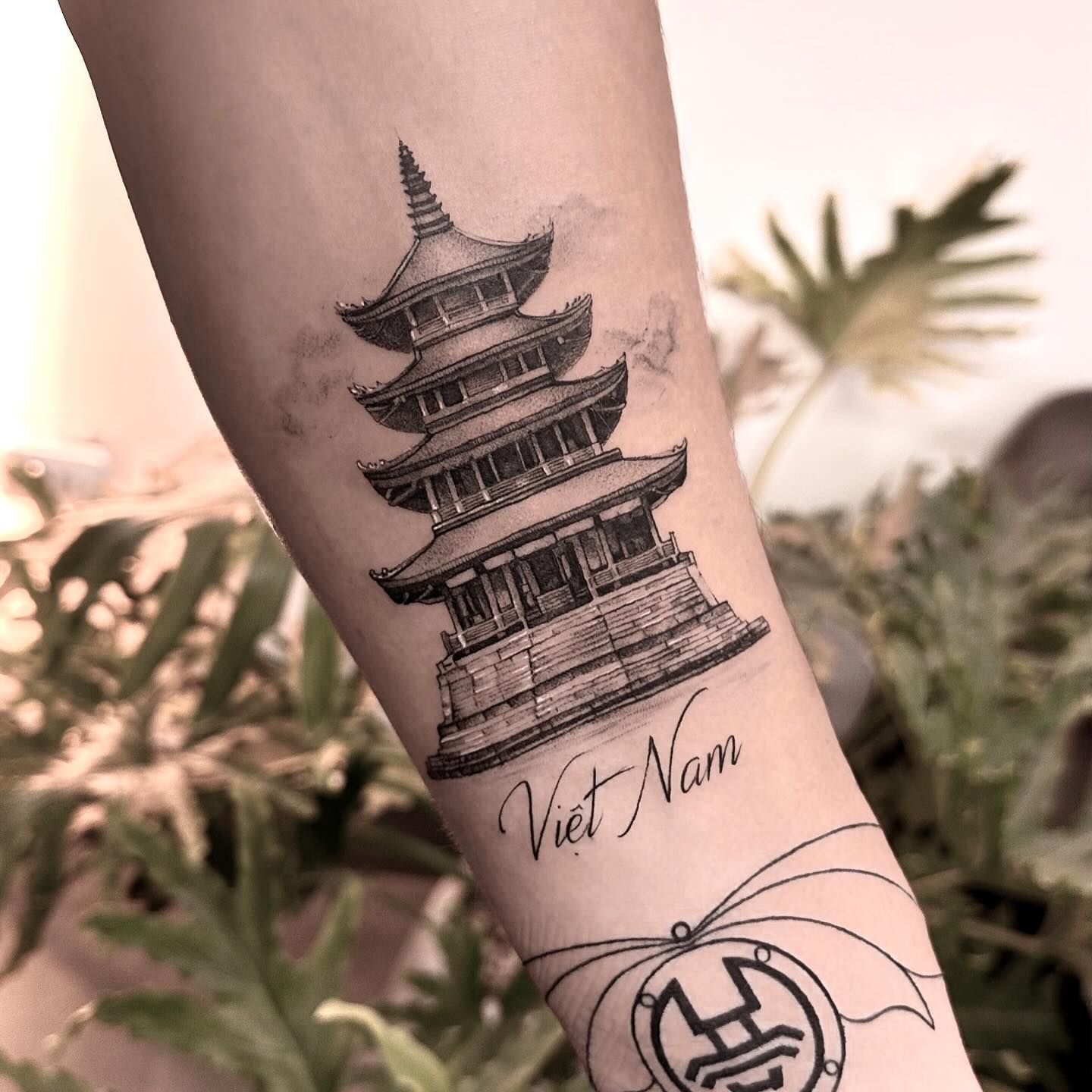
Skin Condition and Location Assessment
The location and overall condition of stretch marks influence both tattoo design possibilities and outcomes.
High-Success Locations:
- Upper arms and shoulders
- Back and upper torso
- Thighs (outer areas)
Moderate-Challenge Locations:
- Abdomen (depending on skin laxity)
- Lower back
- Inner thighs
Higher-Challenge Locations:
- Breasts (due to movement and hormonal changes)
- Areas with ongoing weight fluctuations
- Joints and high-movement areas
Skin Condition Factors:
- Overall skin health and hydration levels
- Presence of other scars or skin conditions
- Skin thickness variations across the stretch mark area
- Individual healing capacity and scar formation tendencies
>>>> THAM KHẢO THÊM: How to get a custom tattoo design inspired by vietnamese art
Individual Skin Response and Ink Behavior
Every person's skin responds differently to tattooing, and stretch marks add another layer of variability to consider.
Factors Affecting Ink Behavior:
- Collagen density variations within stretch marks affect ink settling patterns
- Blood flow differences influence healing and color retention
- Skin pH levels can impact ink chemistry and appearance
- Individual immune responses affect both healing and long-term appearance
Predicting Outcomes: While complete prediction isn't possible, experienced artists can assess likely outcomes through:
- Detailed skin examination and history taking
- Test patches in inconspicuous areas when appropriate
- Photography and documentation of existing stretch mark patterns
- Discussion of similar cases and realistic outcome expectations
Optimization Strategies:
- Pre-tattoo skin conditioning with proper hydration and nutrition
- Timing sessions with optimal health periods
- Following specialized aftercare protocols for scar tissue
- Planning for multiple sessions and gradual build-up approaches
>>>> READ MORE: Top 8 tattoo artists in vietnam – Discover Trusted Names at H2M Tattoo Studio
Risks, Challenges, and Pain Management
Potential Complications and Risks
While tattooing over stretch marks can yield beautiful results, it's essential to understand the unique risks and challenges involved.
Ink-Related Complications:
- Uneven ink distribution: Scar tissue density variations can cause patchy or uneven color appearance
- Color changes over time: Stretch mark skin may process and retain ink differently than normal skin
- Blowouts: Altered skin structure may increase risk of ink spreading beyond intended boundaries
- Poor color saturation: Damaged skin may not hold ink as effectively as healthy tissue
Healing Complications:
- Extended healing periods: Scar tissue typically heals more slowly than normal skin
- Increased infection risk: Compromised skin barrier function may elevate infection susceptibility
- Keloid formation: Individuals prone to excessive scarring may develop raised scar tissue over tattoos
- Allergic reactions: Sensitive scar tissue may react more severely to tattoo inks
Long-term Considerations:
- Tattoo distortion: Future body changes may affect tattoo appearance more dramatically over stretch marks
- Touch-up requirements: Stretch mark tattoos often need more frequent maintenance than conventional tattoos
- Removal challenges: Laser tattoo removal over scar tissue presents additional complications
Pain Management and Sensitivity
Tattooing over stretch marks typically involves increased pain and sensitivity compared to tattooing normal skin.
Why Stretch Mark Tattooing Hurts More:
- Altered nerve endings: Scarred tissue often has increased nerve sensitivity
- Skin thickness variations: Uneven skin depth requires varied needle pressure
- Inflammation response: Scar tissue may react more intensely to tattooing trauma
- Extended session requirements: Multiple passes and longer sessions increase overall discomfort
So, can you get tattoos over stretch marks? Absolutely yes—and at H2M Tattoo Studio, we've helped countless clients successfully transform their stretch marks into beautiful, meaningful artwork. With the right artist, proper timing, and realistic expectations, your stretch marks can become part of a stunning tattoo that celebrates your unique journey. Ready to explore your options? Contact H2M Tattoo Studio today to schedule your consultation and take the first step toward transforming your stretch marks into the body art you've always envisioned.
>>>> NOTE NOW:

